These recordings and descriptions were provided by Dr Dave Chesmore, a senior lecturer at the University of York.
Death’s-head Hawk-moth Caterpillar Eating
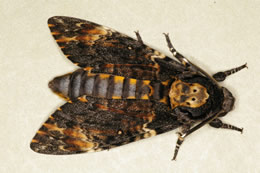
The Death’s-head Hawk is the largest moth in Britain and the caterpillar feeds on potato. The sound is of the caterpillar eating a leaf and was recorded using a miniature microphone. The sounds can be heard if the caterpillar is in a quiet environment.
Stag Beetle Larva Stridulating
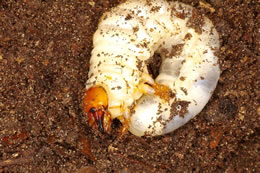
The Stag Beetle is the largest beetle in the UK and is found on the south east of the country. The larvae live in decaying wood and are known to make deliberate sounds (stridulation) by rubbing their middle and hind legs together. It is not known why they make this sound. The recording was made with a custom-built contact microphone.
Water Boatman “Singing” Underwater
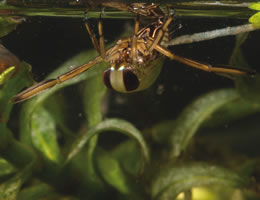
It is amazing how many sounds there are in a pond. One of the most common, and loudest, is the water boatman which can sometimes be heard from the edge of the pond. It is the male that sings by rubbing parts of the body together. The recording here was made using a home-made hydrophone placed in a local pond. There are two boatmen singing in the recording, one close to the hyrophone and a fainter, further away insect.
Beetle Larva Moving and Feeding Inside a Log
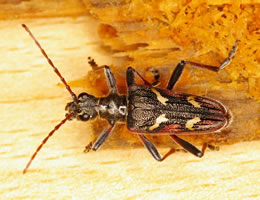
Many species of beetle live inside live and decaying trees, branches and logs when they are in larval form. It is possible to detect the sounds with a contact microphone. The sounds tend to be either very short clicks caused by feeding or more noise-like due to movement. The recording here is of the larva of a Two-banded Longhorn Beetle (Rhagium bifasciatum) inside a pine log. Both types of sound can be heard.
Lesser Marsh Grasshopper Singing

Grasshoppers make sounds by rubbing their hind leg, which has pegs on it, on a thickened part of their forewing. The sounds are different for different species and can be used to identify the insects from a distance. The recording made here is of a Lesser Marsh Grasshopper (Chorthippus albomarginatus) on the bank of the River Humber in East Yorkshire and was made using an audio microphone.
Leaf-cutter Ant Distress Call
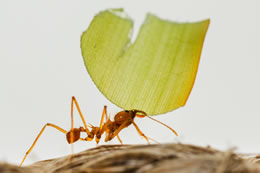
Many species of ants communicate with sound, normally quite high pitched. There are a number of different sounds including a distress call such as the one recorded here. The sound was recorded at the BBC in Glasgow in 2012 using a miniature microphone and has been slowed down by 50% to allow it to be easily heard.
